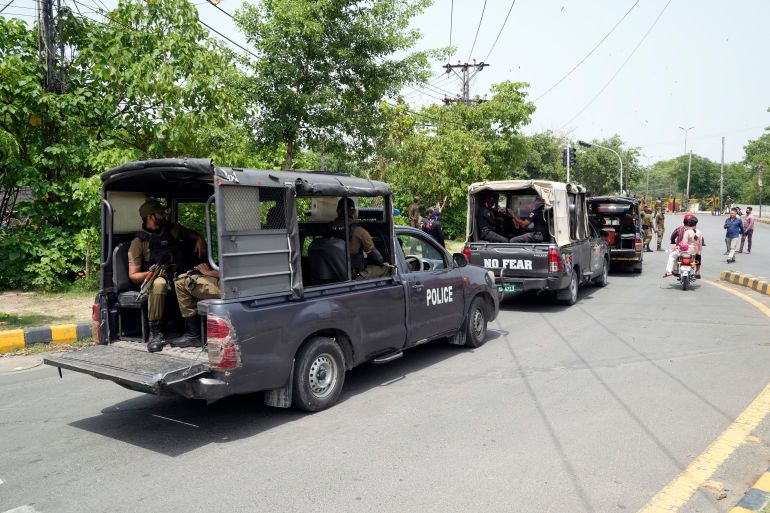hardcore
MPA (400+ posts)
with regards to the new islamabad airport (Gandhara international airport) Few questions comes to mind of the individuals who are keen on knowing more about this airport. for instance:
Benazir bhutto airport does not meet an international airport standard and is more like a small cage.Cannot wait to travel through this new airport.
The New Islamabad International Airport also known as Gandhara International Airport is an under construction international airport nearIslamabad, Pakistan. Its built to replace the Benazir Bhutto International Airport. It is expected to be complete and operational by 2014.
HistoryThe plan to construct a new airport for Islamabad was conceived in the late 1980s to deal with the problem of increased passenger load at theBenazir Bhutto International Airport (then known as the Fatima Jinnah International Airport). Over congestion at the airport impeded the entire process of passenger handling because of which chaotic scenes became a norm. The concourse hall and car parking area are packed to capacity most of the day. The current annual turnover of passengers at the current airport is about 3.5 million. It was estimated that the number of passengers at the airport is growing by 14 per cent annually compared to national air passenger growth rate of less than four per cent, making it one of the busiest airports in the country. Therefore a site near Fatehjang, Attock District Pakistan was selected as the site for its construction. However the project couldn't be started and was repeatedly postponed till 2005. This finally brought the situation to the point where it could no longer absorb the rising number of passengers. Finally the plan to construct a new airport was announced on January 7, 2005 by Civil Aviation Authority (CAA). The foundation stone of the project was laid by former President Pervez Musharraf and Prime Minister Shaukat Aziz on April 7, 2007.
The CAA asked a team of British architects to design a new airport. The British design was approved by the CAA. The airport is the first-ever green-field airport in Pakistan and would be built at a cost of $300 million. The contract signing ceremony was held at the CAA headquarters at Jinnah International Airport, Karachi. Pervez Akhtar Nawaz, (director general CAA, air marshal) signed an agreement with a renowned international consultant, the Louis Berger Group of USA in association with Pakistani consulting firm GT AASR, to undertake project management services. While the first contract for project management services is signed, the CAA is close to receiving bids and proposals from international design consultants and signature architects for design of the new airport. It was envisaged that the design consultants would commence their services by the end of March 2006. Soon after the mobilization of the project management consultants, other processes for invitation of bids and award of construction contracts will be initiated. It is anticipated that the new facility will become operational by June 30, 2013.[SUP][1][/SUP] This airport will be the largest and most modern in Pakistan upon completion.
[edit]Project detailsIt is a joint project of Capital Development Authority (CDA), National Highway Authority (NHA) and the Civil Aviation Authority (CAA) and designed by French company Aroports de ParisIngenierie (ADPi) and CPG Corporation of Singapore. It is being built on more than 3200 acres and consists of a passenger terminal building, runways, taxiways, and apron and parking bays for wide body aircraft. There will also be a cargo terminal, air traffic control complex, fuel farm, and fire crash and rescue facility. It would be equipped to handle all types of aircraft including the new generation aircraft such as the Airbus A-380. The construction site of the airport is on 3,200 acres (1,300 ha) of land, acquired by CAA in 1980s near the Rawalpindi-Fateh Jang Road near Fateh Jang, some 20 km from Zero Point, Islamabad and 23 km from Saddar, Rawalpindi with a driving time of only 20–25 minutes on state-of-the-art motorways and highways. The airport is being developed to be at par with international standards to serve as major hub for all aviation activities in Pakistan.
Estimated to cost about $400 million, the new airport facility, which is the first greenfield airport in Pakistan, shall comprise a contemporary state-of-the-art passenger terminal building, control tower, runway with a provision of a secondary runway, taxiways, apron, cargo complex, and hangar with all the necessary infrastructure and ancillary facilities. It would cater to the requirements of latest generation of modern passenger aircraft. The new airport will have a modular design to handle 6.5 million passengers per annum and 80,000 metric tonnes cargo per annum. Being a new airport, a significant portion of the land has been earmarked for commercial purposes such as duty-free shops, hotel and convention centre, air malls, business centre, food courts, leisure and recreational facilities. The new airport is envisaged to be a modern landmark structure symbolic to represent 21st century Pakistan, as it will be its diplomatic and business gateway through the capital city of Islamabad. The CAA announced that it is to be named Gandhara International Airport after the ancient Buddhist kingdom Gandhara.[SUP][2][/SUP] The project was worked out through three levels: concept designing, primary and final designing.[SUP][3][/SUP]
General facilitiesThe airport will have a 180,000m modular terminal building which will initially be able to handle nine million passengers a year. There will be two 4,000m-long category-F runways (for the largest heaviest aircraft) although initially only one will be used for operations, the other will be retained as an emergency runway. Additionally there will be a cargo complex capable of handling 100,000 tonnes a year, four rapid-exit taxiways, a special parking area for hijacked aircraft, apron parking sufficient for the contact stands, underground cable network, parking for ground handling vehicles, secure cargo areas and major airport road infrastructure.
[edit]Terminal designThe design of the new terminal building will be architecturally significant for Pakistan, intended to produce a national icon. The design is planned to be sustainable and environmentally sound with use of natural daylight for main lighting and sun shading to cut cooling costs as well as an intelligent main roof (water conservation) and an elongated driveway length front portal (better views and more light). French company Aroports de Paris Ingenierie (ADPi) and CPG Corporation (www.cpgcorp.com.sg) of Singapore have been selected for designing the infrastructure and terminal building of the airport.
The terminal will make full use of traditional Islamic geometric patterns in its design. The modular terminal building will have a linear pier on each side and a center pier extending out to serve the boarding gates. The international and domestic halls will be together under the main roof, which will be a simple trapezoid cantilevered from one of the two side piers with a cantilevered mesh screen trellis defining the exposed roof edge and attaching to a row of columns close to the ground.
[edit]ContractorsThe airport infrastructure was designed by ADPI (Aroports de Paris ingnierie) along with Acorp, Mushtaq and Bilal Mahboob Associates. The terminal building was designed by CPG Corporation of Singapore in a joint venture with National Engineering Services Pakistan (Pvt) Ltd (design started in March 2006). The project management consultants for the new airport are Louis Berger Group of the US along with ECIL (Engineering Consultants International Ltd) of Pakistan.
The first phase of the construction (airside infrastructure including runways) is being undertaken over a 24-month contract for PKR11.8bn by Lagan Construction of the Republic of Ireland (60%) and their local partners Husnain Cotex (40%). Husnain Cotex and IKAN have also formed a joint venture to carry out the preliminary works at the site including earthworks and construction of embankments for the runway and main access road. The air side and land-side work is being carried out by joint venture of Lagan Construction of Ireland, Technical Associate and Habib Construction Services.
[edit]Structure[edit]Runways
Two runways are planned for the New Islamabad International Airport. The government has additionally acquired a 400-acre (160 ha) piece of land to build it on. The length of both runways will be 4000 metres.
source:http://en.wikipedia.org/wiki/New_Islamabad_International_Airport
- when would the airport be ready to use
- how much has been completed and the proportion left
- have they got all resources available to finish it
Benazir bhutto airport does not meet an international airport standard and is more like a small cage.Cannot wait to travel through this new airport.
The New Islamabad International Airport also known as Gandhara International Airport is an under construction international airport nearIslamabad, Pakistan. Its built to replace the Benazir Bhutto International Airport. It is expected to be complete and operational by 2014.
HistoryThe plan to construct a new airport for Islamabad was conceived in the late 1980s to deal with the problem of increased passenger load at theBenazir Bhutto International Airport (then known as the Fatima Jinnah International Airport). Over congestion at the airport impeded the entire process of passenger handling because of which chaotic scenes became a norm. The concourse hall and car parking area are packed to capacity most of the day. The current annual turnover of passengers at the current airport is about 3.5 million. It was estimated that the number of passengers at the airport is growing by 14 per cent annually compared to national air passenger growth rate of less than four per cent, making it one of the busiest airports in the country. Therefore a site near Fatehjang, Attock District Pakistan was selected as the site for its construction. However the project couldn't be started and was repeatedly postponed till 2005. This finally brought the situation to the point where it could no longer absorb the rising number of passengers. Finally the plan to construct a new airport was announced on January 7, 2005 by Civil Aviation Authority (CAA). The foundation stone of the project was laid by former President Pervez Musharraf and Prime Minister Shaukat Aziz on April 7, 2007.
The CAA asked a team of British architects to design a new airport. The British design was approved by the CAA. The airport is the first-ever green-field airport in Pakistan and would be built at a cost of $300 million. The contract signing ceremony was held at the CAA headquarters at Jinnah International Airport, Karachi. Pervez Akhtar Nawaz, (director general CAA, air marshal) signed an agreement with a renowned international consultant, the Louis Berger Group of USA in association with Pakistani consulting firm GT AASR, to undertake project management services. While the first contract for project management services is signed, the CAA is close to receiving bids and proposals from international design consultants and signature architects for design of the new airport. It was envisaged that the design consultants would commence their services by the end of March 2006. Soon after the mobilization of the project management consultants, other processes for invitation of bids and award of construction contracts will be initiated. It is anticipated that the new facility will become operational by June 30, 2013.[SUP][1][/SUP] This airport will be the largest and most modern in Pakistan upon completion.
[edit]Project detailsIt is a joint project of Capital Development Authority (CDA), National Highway Authority (NHA) and the Civil Aviation Authority (CAA) and designed by French company Aroports de ParisIngenierie (ADPi) and CPG Corporation of Singapore. It is being built on more than 3200 acres and consists of a passenger terminal building, runways, taxiways, and apron and parking bays for wide body aircraft. There will also be a cargo terminal, air traffic control complex, fuel farm, and fire crash and rescue facility. It would be equipped to handle all types of aircraft including the new generation aircraft such as the Airbus A-380. The construction site of the airport is on 3,200 acres (1,300 ha) of land, acquired by CAA in 1980s near the Rawalpindi-Fateh Jang Road near Fateh Jang, some 20 km from Zero Point, Islamabad and 23 km from Saddar, Rawalpindi with a driving time of only 20–25 minutes on state-of-the-art motorways and highways. The airport is being developed to be at par with international standards to serve as major hub for all aviation activities in Pakistan.
Estimated to cost about $400 million, the new airport facility, which is the first greenfield airport in Pakistan, shall comprise a contemporary state-of-the-art passenger terminal building, control tower, runway with a provision of a secondary runway, taxiways, apron, cargo complex, and hangar with all the necessary infrastructure and ancillary facilities. It would cater to the requirements of latest generation of modern passenger aircraft. The new airport will have a modular design to handle 6.5 million passengers per annum and 80,000 metric tonnes cargo per annum. Being a new airport, a significant portion of the land has been earmarked for commercial purposes such as duty-free shops, hotel and convention centre, air malls, business centre, food courts, leisure and recreational facilities. The new airport is envisaged to be a modern landmark structure symbolic to represent 21st century Pakistan, as it will be its diplomatic and business gateway through the capital city of Islamabad. The CAA announced that it is to be named Gandhara International Airport after the ancient Buddhist kingdom Gandhara.[SUP][2][/SUP] The project was worked out through three levels: concept designing, primary and final designing.[SUP][3][/SUP]
General facilitiesThe airport will have a 180,000m modular terminal building which will initially be able to handle nine million passengers a year. There will be two 4,000m-long category-F runways (for the largest heaviest aircraft) although initially only one will be used for operations, the other will be retained as an emergency runway. Additionally there will be a cargo complex capable of handling 100,000 tonnes a year, four rapid-exit taxiways, a special parking area for hijacked aircraft, apron parking sufficient for the contact stands, underground cable network, parking for ground handling vehicles, secure cargo areas and major airport road infrastructure.
[edit]Terminal designThe design of the new terminal building will be architecturally significant for Pakistan, intended to produce a national icon. The design is planned to be sustainable and environmentally sound with use of natural daylight for main lighting and sun shading to cut cooling costs as well as an intelligent main roof (water conservation) and an elongated driveway length front portal (better views and more light). French company Aroports de Paris Ingenierie (ADPi) and CPG Corporation (www.cpgcorp.com.sg) of Singapore have been selected for designing the infrastructure and terminal building of the airport.
The terminal will make full use of traditional Islamic geometric patterns in its design. The modular terminal building will have a linear pier on each side and a center pier extending out to serve the boarding gates. The international and domestic halls will be together under the main roof, which will be a simple trapezoid cantilevered from one of the two side piers with a cantilevered mesh screen trellis defining the exposed roof edge and attaching to a row of columns close to the ground.
[edit]ContractorsThe airport infrastructure was designed by ADPI (Aroports de Paris ingnierie) along with Acorp, Mushtaq and Bilal Mahboob Associates. The terminal building was designed by CPG Corporation of Singapore in a joint venture with National Engineering Services Pakistan (Pvt) Ltd (design started in March 2006). The project management consultants for the new airport are Louis Berger Group of the US along with ECIL (Engineering Consultants International Ltd) of Pakistan.
The first phase of the construction (airside infrastructure including runways) is being undertaken over a 24-month contract for PKR11.8bn by Lagan Construction of the Republic of Ireland (60%) and their local partners Husnain Cotex (40%). Husnain Cotex and IKAN have also formed a joint venture to carry out the preliminary works at the site including earthworks and construction of embankments for the runway and main access road. The air side and land-side work is being carried out by joint venture of Lagan Construction of Ireland, Technical Associate and Habib Construction Services.
[edit]Structure[edit]Runways
Two runways are planned for the New Islamabad International Airport. The government has additionally acquired a 400-acre (160 ha) piece of land to build it on. The length of both runways will be 4000 metres.
source:http://en.wikipedia.org/wiki/New_Islamabad_International_Airport
- Featured Thumbs
- http://www.pakistaniaviation.com/fnmharcit/isb_air1.jpg
Last edited by a moderator:





























